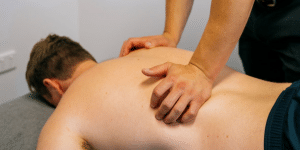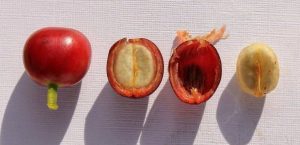The Truth About Paleo

Acknowledgement: this article about the Paleo Diet appears on the Dietitians Association of Australia website, www.daa.asn.au
There is debate whether the Paleo Diet is truly healthy or not. Palaeolithic diets were first suggested in 1985 on the basis that current day chronic metabolic disorders have resulted from a gene-culture mismatch and the human body’s inability to adapt from Palaeolithic times. Yet there are multiple examples suggesting that this is simply not true.
PART 1. THE PALEO DIET: WHAT IS IT?
The Palaeolithic period is a period of human history extending from approximately 2.5 million to approximately 10,000 years ago. Early in this period, people ate primarily vegetables, fruit, nuts, insects, roots, and meat, which varied depending on season and availability. Scavenging and gathering food eventually lead to hunting larger animals. The diet tended to be higher in protein, lower in fat but with more essential fatty acids, and was lower in sodium and higher in fibre. However, it is incorrect to suggest that the carbohydrate content was low. Instead, carbohydrate came from other food sources and there was a wide range in the level of consumption which was based on location and season.

FACT: THERE WAS NOT ONE PALEO DIET
Modern lifestyles mean that we spend most of our daylight hours at work, rather than hunting and gathering. Most of our food is hunted down between the aisles and gathered in a large shopping trolley! It is simply not possible to find the appropriate foods (the variety or the type of food) in the modern era to match the Paleo Diet of the past. Furthermore, research has shown that a 9.3% increase in income is needed to achieve nutrient targets (except calcium) and consumers typically had trouble making the large dietary changes necessary to follow the Paleo Diet.

FACT: THE PALEO DIET IS EXPENSIVE AND HARD TO SUSTAIN
Agriculture came only approximately 12,000 years ago, so individuals and whole communities in Palaeolithic times worked together to hunt, gather and then cultivate crops. This new period is termed the Neolithic era and although the change in diet was not sudden, there is evidence from this period that humans continued to evolve and at a more accelerated rate than during the Palaeolithic period. Gene studies of this period indicate starch consumption (from genes that code for amylase production) and milk consumption (from genes that code for lactase which is persistent after weaning and into adult years) which could have only occurred after humans had developed dairy practices.

FACT: PEOPLE KEPT CHANGING AND ADAPTING AFTER THE PALEO PERIOD. WE ATE STARCHY FOODS AND DRANK MILK
Although the food types and quantities suggested in the Australian Dietary Guidelines (ADGs) differ from Palaeolithic dietary patterns, many of the same fresh choices are emphasised. Unfortunately, we know many Australians do not eat the recommended two serves of fruit or five serves of vegetables each day. So many people are eating less than our ‘cavemen’ ancestors consumed, and a much narrower selection of the food types than was consumed during these periods. The most recent dietary survey suggests that only 5.5% of Australian adults have adequate daily intake of fruit and vegetables while more than 40% of energy is derived from ‘extra’ or ‘discretionary’ foods and drinks that provide very little nutritional value.

FACT: MOST AUSTRALIANS NEED TO EAT MORE FRUIT AND VEGETABLES AND LESS ‘EXTRA’ FOODS – BUT THIS NEED NOT BE PALEO.
In summary, the precise diet consumed by Palaeolithic man would be difficult to replicate today. Any modern reconstruction of the diet is more likely to be based on ‘fashion’ than science. While the ADGs are based on strong evidence from more than 55,000 studies, a Palaeolithic diet has been studied in very few people and not over the long term.






